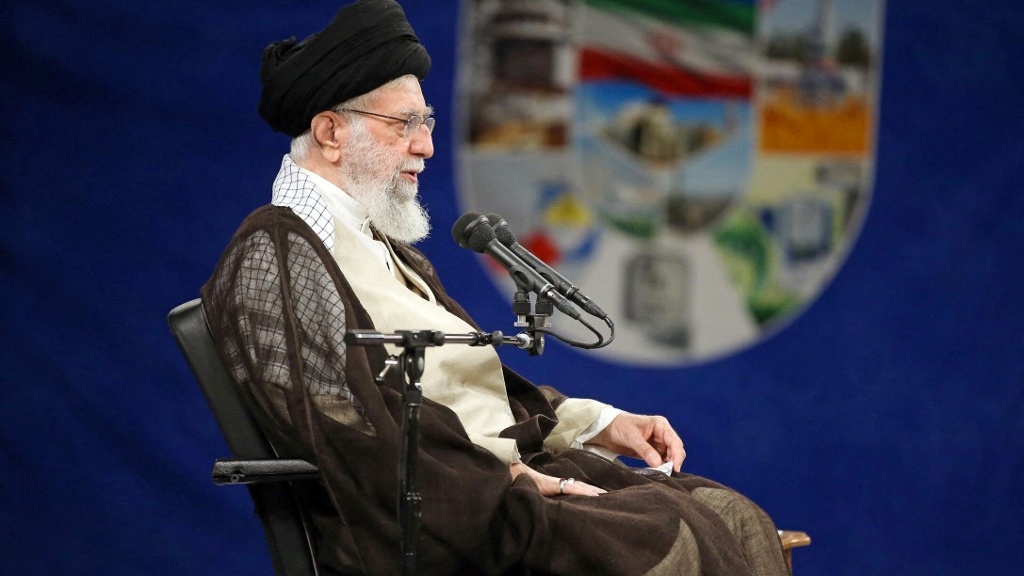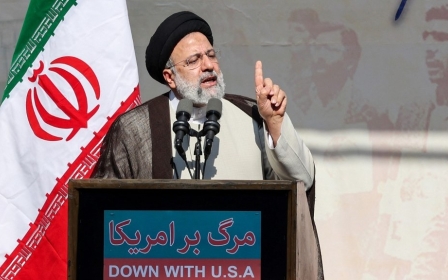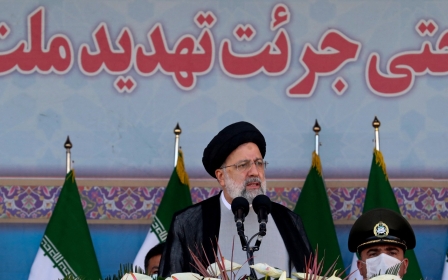Iran nuclear deal: How to get it right

With policy choices now being shaped by an election year in the US, and given the unpopularity of the Iran nuclear deal in Congress, President Joe Biden has chosen to give up on deal-making that could lay an enduring basis for improved US-Iran relations. Instead, he is relying on short-term transactional crisis management (“no deal, no crisis”).
The Biden administration has realised, but failed to convince Congress, that former President Donald Trump’s May 2018 decision to withdraw from the Iran nuclear deal and reimpose sweeping sanctions was a lose-lose for both the West and Iran.
But there may be a better way. In a recent talk at the US Strategic Command Deterrence Symposium, I said that Trump’s withdrawal from the deal was a disaster and a loss for both Washington and Tehran, for several reasons.
Firstly, Iran has since ramped up its nuclear activities, increasing the level of its uranium enrichment to near-weapons-grade 60 percent, well above the deal-mandated level of 3.67 percent, and built stockpiles of highly enriched uranium. Iran’s potential breakout time for acquiring enough weapons-grade uranium for a first nuclear warhead has been slashed from a year to “about 12 days”.
In addition, both Trump’s maximum-pressure policy and Israel’s sabotage of Iran’s main enrichment facility and assassination of its leading nuclear scientist have proved ineffective.
New MEE newsletter: Jerusalem Dispatch
Sign up to get the latest insights and analysis on Israel-Palestine, alongside Turkey Unpacked and other MEE newsletters
At the same time, Iran has pivoted towards cultivating stronger ties with Russia and China, including by joining the Shanghai Cooperation Organisation and, more recently, the Brics group, comprising Brazil, Russia, India, China and South Africa (and as of January, Argentina, Egypt, Ethiopia, Iran, Saudi Arabia and the UAE). The allegation that Iran has supplied drones to Russia for use in the Ukraine war points to the intricate dynamics of Iran’s relations with these countries.
The end of the nuclear deal was also a loss for Iran. US sanctions have inflicted an estimated $1 trillion in damage on Iran’s economy, while the number of Iranians living below the poverty line has surged to around 30 percent.
Laying foundations
Talks mediated by Qatar and Oman between representatives of the US and Iran laid the foundations for a recent informal agreement to curb Iran’s accumulation of highly enriched uranium, allow increased international inspections of its nuclear facilities, and halt its proxies’ attacks on US forces in the Middle East.
Iran also agreed to release five US prisoners in exchange for the US releasing several Iranians and $6bn in frozen Iranian funds to Qatar, to be used for purchases of food, medicine and other humanitarian goods for Iran’s population.
There can be no assurances that US efforts at regional de-escalation will be sustained through the next American presidential election
Tehran will also be allowed to export more oil. According to Iran’s deputy foreign minister, Ali Bagheri, “the [issue of] funds in Iraq was also raised in the understanding reached with the Americans and the process for their release has also started”.
While western states won’t engage in military cooperation with Iran, a European official told me on condition of anonymity that the US and Europe will also not attempt to extend UN Security Council restrictions on Iran’s imports of arms under Resolution 2231, set to expire this October. Moreover, the official added that Europe would refrain from employing the snapback mechanism to restore UN sanctions.
These developments are positive but, for three major reasons, there can be no assurances that US efforts at regional de-escalation will be sustained through the next American presidential election.
Firstly, various regional and international actors opposed to the Iran deal may take actions to escalate tensions again, while also shifting blame. Secondly, the outcome of the US presidential election in 2024 remains uncertain; a victory for a hardline Republican could spell the permanent demise of de-escalation efforts.
Last but not least, for the past two decades, both Iran and the US have employed bargaining tactics during nuclear talks. While the US has utilised sanctions, coupled with global and regional pressure, Iran has responded by boosting enrichment capacity and leveraging its regional influence. The “no deal, no crisis” scenario enables the US to retain its bargaining leverage through sanctions, while Iran commits to limiting nuclear progress and regional disputes.
Essential elements
A revival of the nuclear deal may yet be possible, but two further elements would be essential. One would be direct Iran-US negotiations, and the other would be a revival of the US partnership in negotiations with China, France, Germany, Russia and the UK, based on their proposed August 2022 draft text to revive the deal.
Positive momentum generated by the informal agreement should catalyse a shift from Biden’s “no deal, no crisis” to a “deal, no crisis” approach. The revival and implementation of the nuclear deal could also create the minimum necessary confidence for a direct US-Iran dialogue on other contentious matters.
The UN General Assembly session in mid-September would be a good opportunity for a resumption of US-Iran direct negotiations, followed by P5+1 talks with Iran. Diplomacy is imperative to prevent a potential downward spiral towards another war in the Middle East.
In my speech at the US Strategic Command Deterrence Symposium, I suggested a comprehensive dialogue between Iran and the US to end more than 40 years of animosity and to restore normal relations based on mutual respect, mutual interests and non-interference.
Yet, before the beginning of the comprehensive dialogue between the two governments, I think a dialogue between representatives of the US Congress and the Iranian parliament should take place. Moreover, since both the US congress and Iranian parliament object to rapprochement between the two countries, an internal dialogue among Republicans and Democrats in the US Congress and one among opposing sides in the Iranian parliament should take place to ensure each country brings a unified voice to bilateral talks.
The views expressed in this article belong to the author and do not necessarily reflect the editorial policy of Middle East Eye.
Middle East Eye delivers independent and unrivalled coverage and analysis of the Middle East, North Africa and beyond. To learn more about republishing this content and the associated fees, please fill out this form. More about MEE can be found here.






